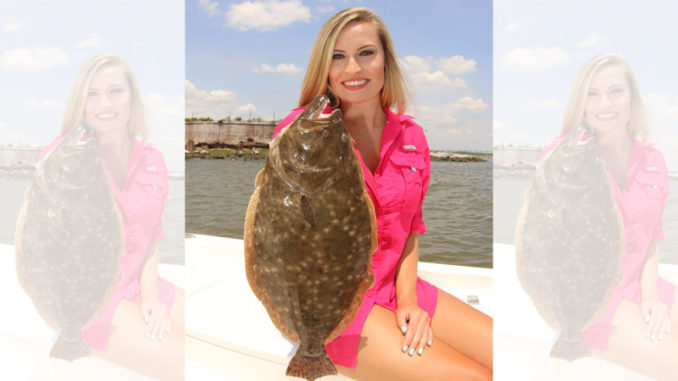
Editor’s note: this is an archived article from 2018 when harvesting flounder in October was legal in North Carolina.
By targeting trout, flounder, reds, black drum, you stand a better chance of catching them all
October is the month for trick-or-treating. But most inshore anglers are less focused on Kit Kats, Starlight mints, and bubble gum than they are on redfish, speckled trout and flounder. This is the best time of year to catch the “inshore slam.” And with a little luck, anglers can make it a “grand slam” by adding a black drum to their day’s catch.
The abundance of a variety of baits, including shrimp, mullet, crabs and mud minnows, mixes with the cooling water to put all three species that make up the inshore slam in a feeding mood. Many anglers consider this the hottest inshore bite of the year.
Some anglers fish all day doing the same thing — using a Carolina rig with a 1-ounce weight, a 12- to 18-inch leader of fluorocarbon, a 3/0 circle hook, and either a live shrimp or mullet. On a good day, they can catch specks, reds and flounder without changing a thing. Black drum will also bite this rig.
Or they can plan to catch all three species, much more rewarding once the task is complete. For most anglers, that means starting at daybreak targeting trout with topwater lures.
Start at daybreak to get the most bang for your buck
While the tide cycle has much to do with when trout feed, plenty of them will bite just as the dawn transitions from dark to light. Even then, the tide plays a role in the best place to catch them.
Angler Jonathan Blaine from Whiteville, N.C., said the best thing about fishing topwater lures for trout is that it doesn’t matter how deep the water is.
“If it’s 12 feet deep or 6 inches deep, trout will come up to get what they see as an easy meal,” he said. “If it’s high tide at daybreak, I’ll have two different topwater lures tied on to two rods. One is the D.O.A. PT-7, which is a soft bodied lure with its single hook buried in the skin of the lure’s back. This makes it weedless, and I will throw that around spartina grass, especially when there’s pockets of open water in the middle of big patches of grass. This is great at high tide because trout and redfish will feed along those grass lines, and even deep in the grass if they have enough water to chase the baitfish in there.
“My other lure is a 31/2-inch Super Spook Jr., which I cast over submerged oyster rakes in a variety of depths, depending on whether the tide is coming in or going out. On some days, you can catch trout above these oyster rakes anywhere from half-a-foot deep to just about any depth, as long as you’re keeping the lure above the oysters.”
Live shrimp for bait is tough to beat
Once he’s got trout on his scorecard, Blaine switches to live shrimp and heads to dock pilings close to moving water.
“This is really effective if you anchor within casting range, with the end of the dock ahead of you on one side with some incoming water coming in on the other side,” he said. “The redfish will hide under that dock and come out to swipe at baitfish getting swept into range by that incoming water. This time of year, it’s often clear enough to watch the fish pick up your bait.”
Once Blaine has caught trout and redfish, he targets flounder, which he finds to be less impacted by the tide cycle than trout or reds.
“Whether the tide is coming in, going out or slack, I can catch flounder with a live mullet or mud minnow on a jighead by finding the deepest holes in the shallowest creeks,” he said. “I have a good feel for where these are from simply fishing the same areas for decades, but I will check my depthfinder in unfamiliar spots. If there is any current at all, I will cast upcurrent above the deeper holes, then reel the bait into the hole. Then, I reel painfully slow to keep the bait in the hole as long as possible. The baitfish is squirming around and making plenty of action, and the slower you reel, the better the chance at a flounder picking it up.
“Once I’ve caught the inshore slam, I target black drum by casting small pieces of cut bait tight to wooden structure. The closer you cast to submerged wood, the more likely your next bite will be a black drum,” he said.
Click here to read about catching the inshore slam without a boat.

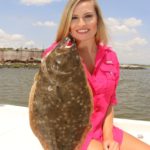
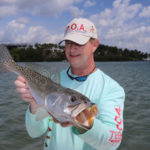
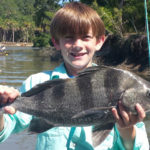
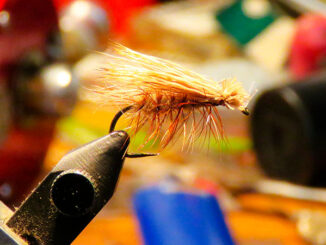
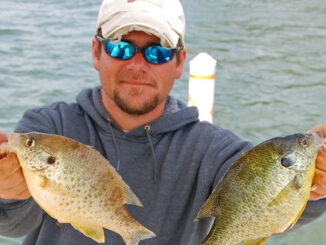
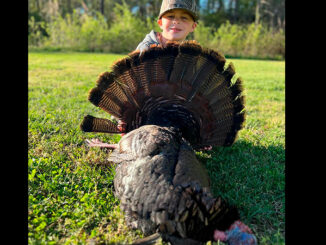

Be the first to comment